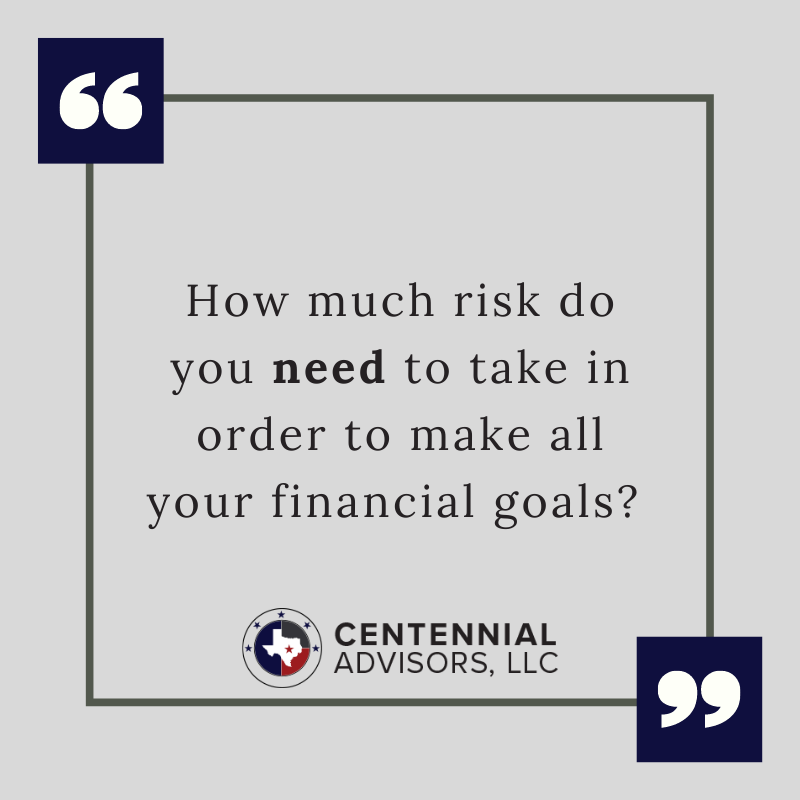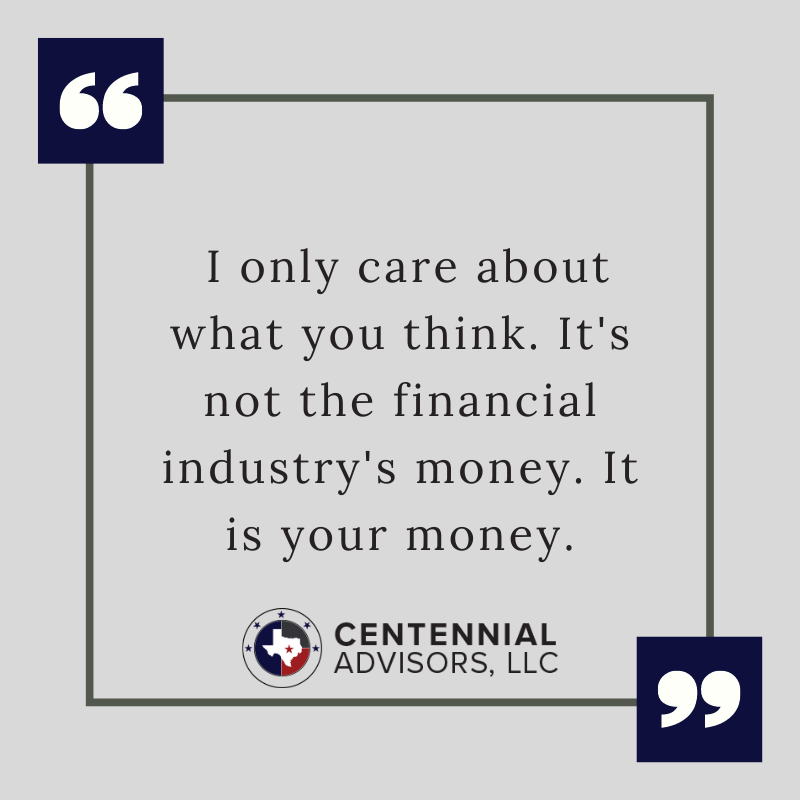Transcript
00:00:00:04 – 00:00:32:07
Mike
Today we are going to ask and answer the question, how much risk can you take when it comes to your investing? The reason I’ve got this laid out this way is because the word can scan is really an acronym. The first letter C. What does it stand for? That stands for capacity. Let’s imagine that you go talk to a financial advisor.
00:00:32:07 – 00:01:04:16
Mike
No, no. You talk to ten financial advisors out there. When you talk to those advisors, probably eight of them or even nine of them before they invest your money, they’re going to ask you to fill out something called an r, p q, which stands for Risk Profile. Questionnaire. They ask you questions like, Hey, what’s your time horizon, your investment time horizon?
00:01:04:25 – 00:01:25:08
Mike
You know, when the market goes south, are you more likely to buy more stock, sell stock or just hold on? If you said, hey, why do you want this information? Why are you asking these questions? They’re going to give you reasons. But at the end, there’s only one reason that they’re asking for that. And it’s because they you have to understand this.
00:01:25:22 – 00:01:52:07
Mike
The big brokerage firms, they make money and risk. The more risk you take, the more money they make in your account. They make money taking risk. And so what that questionnaire does is it tells them here is the maximum amount of risk that they can take with your money without losing a court case. When you sue them for losing too much money, so if it’s 2008 and you’re down 40% and you’re mad at them.
00:01:52:14 – 00:02:10:26
Mike
So you say, that’s it, I’m going to sue you. You took too much risk with my money. They’re going to wipe out that document you know, they go to court that whip out that document and say, oh, no, no, look, you know, Joe and Mary, look, they signed off. They took this questionnaire. We just did what they asked us to do.
00:02:10:27 – 00:02:32:12
Mike
The minute you do one of these, you have absolved them of any responsibility, really, when it comes to your money, let’s say that you score out as a, you know, kind of middle of the road investor. You’re a moderate. You on a scale of one to ten, one meet your super conservative and ten means you’re super aggressive. You’re like a five or six.
00:02:32:12 – 00:03:02:02
Mike
This might surprise you if you score is kind of somewhere in the middle That risk profile questionnaire says to that company, you know what this person, they are comfortable losing about 35% of their money in a 12 month period. If I’m like a five or that that sounds like an eight or nine to me no that’s about what the financial industry categories categorize as a five or six like a balanced investor can lose 35% of their money in a single year they did in 2008.
00:03:02:11 – 00:03:23:19
Mike
Now the next one a what does that stand for a stands for attitude well what does attitude mean? Well, how about this? Okay. You’re kind of call yourself moderate like you’re you’re not conservative, you’re not aggressive. You’re kind of in the middle moderate and it’s a really bad you’re in the market and you start seeing your account going down.
00:03:23:23 – 00:03:45:12
Mike
How far does it go down before you start calling me and start get worried? Well, most people who are in the middle they would say and maybe 15%. So what does that mean? You got $1,000,000 you might have more or less is just to make the math easy. A risk profile questioner says on $1,000,000, you can lose 350 grand in a single year.
00:03:45:20 – 00:04:05:20
Mike
But you’re sitting there saying, no, no, no, I’m in the middle. Like maybe 150. It starts go more than that. I’m starting to freak out. Which of these numbers is more important to you? The the amount of loss that the financial industry says you should be able to, you know, they’re like, hey, we did a risk profile questionnaire.
00:04:06:02 – 00:04:30:10
Mike
You should be okay. Losing 35%. Is that more important to you or is it more important to you? They say, no, no. Now, internally, if I lose more than 15, I’m going to go crazy. What you think about your money you is more important than that. I don’t care what the financial industry thinks. I only care about what you think.
00:04:30:13 – 00:04:53:03
Mike
And you’re saying, Oh, my pet tracks I get it. I shouldn’t take that much risk. I should take this much risk. Are getting closer. But but wait a minute. We have one more letter here. We have an end. What does that stand for? Hmm. That stands for the word need. As a fiduciary, I come at this a little differently.
00:04:53:04 – 00:05:21:26
Mike
I’m going to ask this question. How much risk do you need to take in order to make all your financial goals reality? What if it was 5%? What if when running the math, I was able to tell you, look, that’s too aggressive. You don’t need to take on that much risk. You can make all your dreams, all your financial goals.
00:05:21:26 – 00:05:42:22
Mike
Reality in a bad year would be a 5% loss now, you might not make 10% a year like you might up here on average. Over time, you might make only seven, but maybe you don’t need to make 10% a year, maybe 7% a year is plenty, right? As a fiduciary, I’m going to come from the bottom up sea.
00:05:42:22 – 00:06:03:26
Mike
The financial industry is trained. All the big firms, our trade bound to take a top down approach. They start up here and they hope they never have to leave it. Right. It’s how it works. That’s just a measurement to determine the maximum amount of risk you should take. I don’t care about maximum risk. I care about the bottom up.
00:06:04:10 – 00:06:27:20
Mike
What’s the smallest amount of risk that you need to take? If I could make this no zero, if I could say, look, you can invest your money where you never, ever lose a dime and you’re you’re still going to make all your dreams happen in today’s low interest rate environment, do you think we can get away with that?
00:06:28:27 – 00:06:52:25
Mike
Almost never, right? Almost never. But that’s the point. Start with need the N, not with the C. So how much risk can you take? Financial industry says this. You say that fiduciary. They focus on the bottom. That’s this week’s episode. See you again next time.

